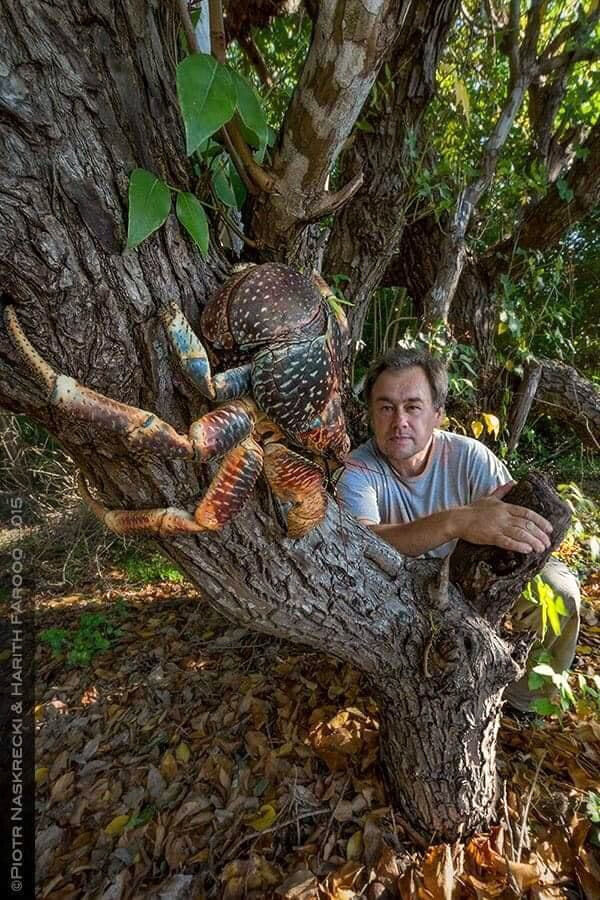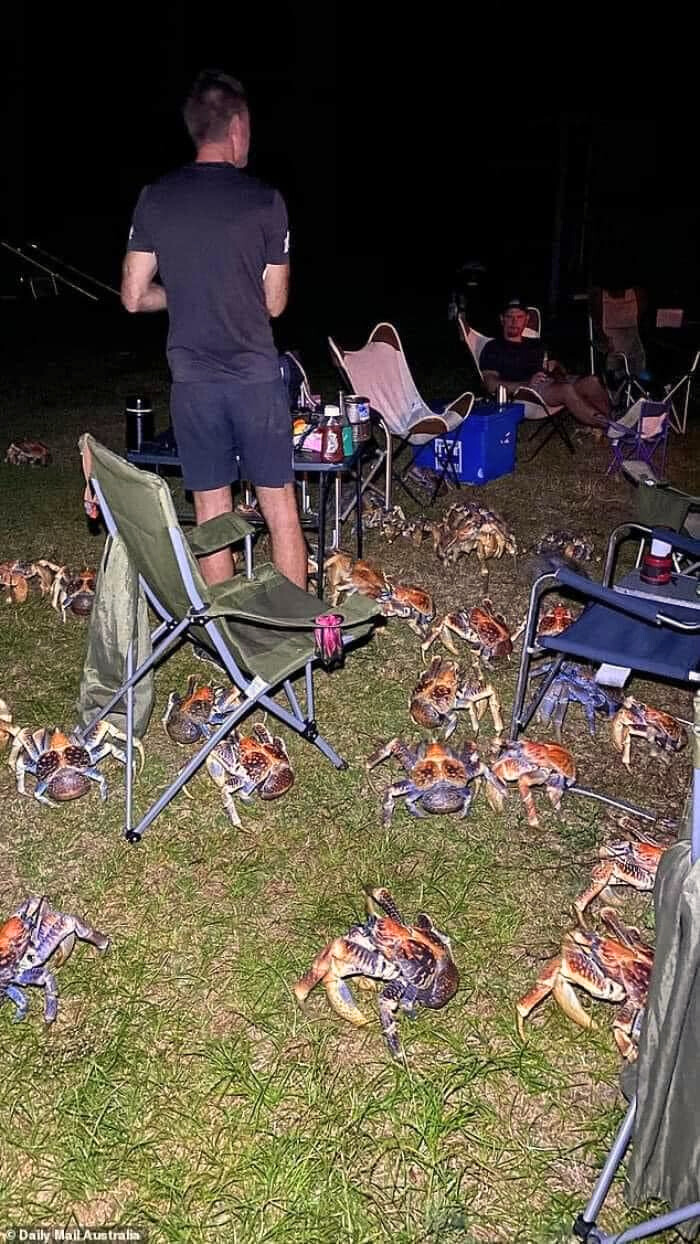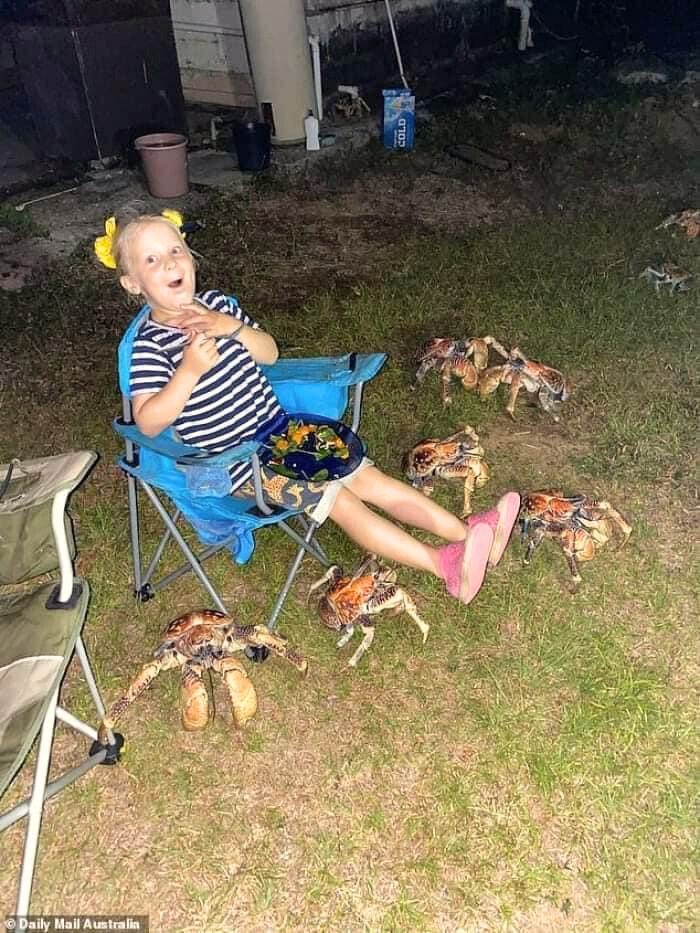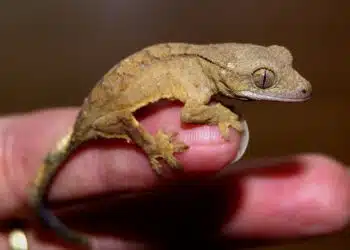Giants of the Land: Exploring the Fascinating World of Coconut Crabs
Just think of a giant animal that climbs trees with ease, and those sharp talons that can open even the hardest of the coconuts. The Coconut Crab or as scientifically known as Birgus latro is the giant of the crab world. This extraordinary sea creature is not just a common crab. It is the largest terrestrial arthropod in the world and has a leg span of up to 3 feet and a weight of more than 5 pounds. These crabs are brightly colored, blue or red and are indeed a natural wonder.
This article takes a closer and rather an exciting look into the life of the exceptional Coconut Crabs. We will discuss their physical attributes, environment, feeding habits, and life cycle that enables them to survive in isolated tropical islands. Come with us as we reveal some of the mysteries surrounding these astounding creatures of the earth.

1. Physical Description
1.1. Coconut Crab Characteristics
Also known by its scientific name Birgus latro, the Coconut Crab is probably the biggest among all the crustaceans. These crabs can grow up to a size where their leg span is as wide as three feet, making them the largest arthropod that is semi terrestrial in the world. Adults can weigh over five pounds, indicating that they have a good muscular structure. Their bodies are covered with shells that vary in color from deep blue to bright red to showcase their beauty. While other crabs have soft shells, Coconut Crabs possess hard shells that are capable of warding off enemies and other dangers like predators and environmental hazards.

1.2. The Role of Their Claws
The Coconut Crab seems to have one of the most potent claws in the entire crab family. These are not mere pincers but they are considered as some of the most powerful pincers in the animal kingdom if the size of the animal is taken into consideration. The claws are very important and are used for various functions that are vital in the existence of the creature. Most importantly, they assist the crab to climb trees effectively and with great speed. Even more impressive is the fact that these mighty claws can even open a coconut, a primary food source of crabs. The fact that it is possible for these crabs to crack open coconuts tells much about the force that these creatures can apply, thereby attributing their success to their ability to adapt to the conditions of the island.
2. Habitat and Distribution
2.1. Geographical Range
Coconut Crabs are commonly found in the part of the countries in the Indian and Pacific parts of the ocean. They are distributed over a large geographical area stretching from the Andaman, Nicobar Islands in the Bay of Bengal to the central part of the Pacific islands, French Polynesia. They are most typically witnessed in islands where their specializations can be deployed to the best effect, free from the competition and predation demands of continental ecosystems.

2.2. Environmental Preferences
Natural environments that tend to be favored by Coconut Crabs are those that are warm and moist, found in the warmer tropics and sub-tropics. They can be found in beaches with sand as well as forests, and they are mostly nocturnal, then they can be seen crawling below the surface of the fallen logs and other vegetation. Their choice of environment is important; these areas offer the shelter and foods they need. The tropical habitats of these islands provide shelter from predators and harsh weather, and provide all the coconuts and other organic products required for their survival. The specificity of these environments explains their appropriateness to the life span of these brutes and enable them to live on despite their size and slow pace of movement.
3. Diet and Hunting Behavior
3.1. Varied Diet of the Coconut Crab
Coconut Crab has a very vast diet and is quite flexible consuming what is available in its island territory. Even though they are well known for their love of coconuts, these crabs are in fact omnivores and will feed on many varieties of organic matter. Their diet includes fruits, nuts, seeds, and the white interior of tree trunks, as well as being obligate carnivores if it means a meal. At times, they’ll feed on other small animals; other crustaceans and can attack and consume birds and even rats.

3.2. Hunting and Scavenging Techniques
Coconut Crabs show peculiar concerns when it comes to the acquisition of their food, such as foraging and predation. One of the major food resources they have to seek at certain times is the coconuts and in order to do this, despite their large, cumbersome bodies, these crabs can climb trees. They are able to climb up the trunks of palms to get to the coconuts and then push them off the ground using their claws. Their scavenging is just as random; they rely on their excellent sense of smell to find some carrion or organic matter which they can eat. This combination of climbing skills and foraging capacity explains the kind of adaptation that is characteristic of these animals within their particular ecological zone.
4. Life Cycle and Development
4.1. The Life Cycle of the Coconut Crab
The life cycle of the Coconut Crab commences in the sea where the female releases her fertilized eggs. These eggs develop into small motile post-larvae called zoea. The zoea stage transforms through several planktonic stages, which may take days to weeks or even months based on conditions in the environment. As for the animals, they are exposed to a number of aquatic dangers during this time of their lives. They grow into a pre adult stage called megalopa and in search of a substratum on land they undergo metamorphosis.

4.2. Transition to Hardened Shell
When the megalopa has located a favourable habitat on the land it will molt into a juvenile crab. During this juvenile phase, the Coconut Crab begins its live on the land using abandoned shells or other hard shelters as it is typical of hermit crabs. This stage is very important because it affords protection while their own exoskeleton is in formative stage. Eventually, as the Coconut Crabs continue to molt, they are shed of these ‘borrowed’ shells. Their exoskeleton becomes rigid, offering enough armor and enabling them to grow to mature size and capacity. This is a significant phase in their life as it allows them to move to diverse environments and find diverse food sources as they have to survive as the largest terrestrial arthropod.
5. Conservation Status
5.1. Vulnerability and Threats
The Coconut Crab is currently listed as a vulnerable species, facing several threats that jeopardize its survival. One of the primary concerns is habitat loss due to human development and deforestation on the islands they inhabit. As their natural environments shrink, these crabs lose both their food sources and their shelter. Additionally, human exploitation poses a significant threat. Coconut Crabs are often hunted for their meat, considered a delicacy in many cultures. This hunting, coupled with their slow reproductive rates, makes population recovery challenging.

5.2. Protective Measures and Future Actions
In response to these threats, conservation efforts are underway to protect the Coconut Crab. Some islands have implemented legal protections, restricting the capture and trade of these crabs to ensure their populations are not depleted. Conservationists are also working on habitat restoration projects to preserve and restore the natural environments essential for the crabs’ survival.
Further measures that could enhance their protection include stricter enforcement of existing laws, community-based conservation programs to raise awareness among local populations, and further research to better understand their ecological needs and vulnerabilities. Establishing more marine and land reserves where these crabs can thrive without human interference is also crucial. These efforts collectively aim to secure a sustainable future for the Coconut Crab, ensuring that these giants of the land continue to roam our planet.

Conclusion
The Coconut Crab, Birgus latro, stands as a remarkable creature, the largest land crustacean on Earth, showcasing vibrant colours and an impressive size. These crabs are not only fascinating due to their physical attributes but also because of their unique behaviours and adaptations. From climbing trees to crack-open coconuts to their diverse diet that includes scavenging and occasional hunting, they exemplify the intricate balance of nature on the remote islands they inhabit.
However, the survival of the Coconut Crab faces significant threats, primarily from habitat loss and human exploitation. Their vulnerable status highlights the urgent need for effective conservation measures. Efforts to protect their habitats and regulate hunting are crucial in preventing their decline.
Reflecting on the importance of preserving such a fascinating species is not just about saving an individual creature. It is about maintaining biodiversity, ecological balance, and the health of our planet’s ecosystems. By ensuring the survival of the Coconut Crab, we also safeguard the heritage of natural wonder for future generations, reminding us of our responsibility as stewards of the Earth.
Also you can read an article about 14 Pictures That Unveil The True Beauty Of Red Fox and more amazing articles in our website Bamboospanda.









